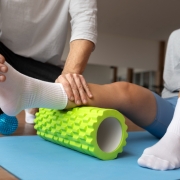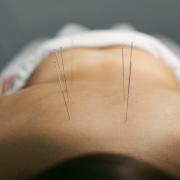Phsyical Therapy for TMJ – An Alternative to Surgery
For people struggling with TMJ disorder, surgery may seem like the only solution. While this was the typical treatment in the past, new treatments have come to light that offer an alternative that doesn’t require going under the knife and often with excellent results.
What Causes TMJ?
TMJ disorder has a number of potential causes. Some of those respond very well to physical therapy treatment, while others do not. Some of the more common causes of the disorder include:
- Bite problems
- Grinding the teeth
- Stress or poor posture
- Inflammatory joint conditions
- Autoimmune disease
- Dental procedures
- Injuries
For conditions like inflammation or autoimmune disease, treating the underlying issue is vital. For bite problems and dental procedures, getting a dentist on board is important. Stress, posture issues, teeth grinding, and injuries can all respond quite well to physical therapy.
How Physical Therapy Works for TMJ Disorder
TMJ dysfunction responds very well to conservative treatments, like bite guards, orthodontic care, and physical therapy. Physical therapy uses pain-rerelieving exercises and stretches to reduce stress on the joint and help the jaw hold a more natural, sustainable position. It may also use ice and heat to loosen tension in the jaw. At ourPhysical therapy clinic in Wichita, we also use massage, electrical stimulation, and trigger point dry needling as treatment for TMJ.
If you choose physical therapy as part of your TMJ treatment, your therapist will assess your mobility and pain in your jaw to determine the underlying source. They will then create a customized plan of exercises and stretches to target the specific areas of concern for you, while also providing in-office treatments. You’ll work with them to perform these therapies, so you can enjoy pain-free movement in your jaw.
Relief from TMJ disorder is possible. Reach out to Physical Therapy by Phoenix today to schedule an evaluation with a physical therapist.








